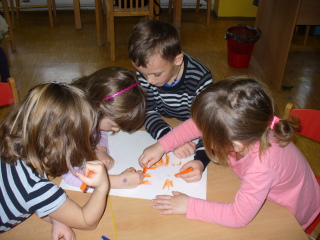There are many dimensions of student achievement that we need to evaluate in a project based learning as an eTwinning project is. The end product is certainly important, but if we focus only on that, the meaningful learning that happens throughout the process can be lost.

The advantage of PBL is that students learn much more than the content. They learn HOW to work with others, solve problems, present their ideas clearly to an audience, and learn from their mistakes. In other words it is important not only what they learned, but how they came to learn it so that they can use these processes in the future.
Assessment is an ongoing process with frequent feedback given to students and partner shools regarding content mastery, collaboration, presentation, meeting deadlines, etc.
Evaluation of the project activities has been based on the following tips:
- driving question: Which are our favoruite pets'? How can we know those of the partner countries? Sharing ideas in google docs
- using the driving question as a formative assessment: "How did our activities relate to the driving question? On-going adaptations, integrations, revisions and positive reinforcement
- on going feedback from parents, colleagues, community
- reflection upon the activities with children by viewing videorecordings of the experiences
- observation grids
DISSEMINATION
- School websites, blogs
- Newsletters, articles
- Parents meetings
- Teacher training courses
- Erasmus Plus KA1 embedded projects (Italy-Romania- Spain/Maracena-Granada)
- National Digital Progamme- Italy (PNSD)
- National CLIL project for primary schools- Italy - 2015/16 (click on the picture below for direct link)

Some examples.....
ABENCERRAJES SCHOOL'S VIDEO TO PRESENT THE PROJECT TO PARENTS.
CEIP. Abencerrajes Granada, Spain. (Juan, Marisa, María, Ana and Esther)
Here there´s the link to our video, not only to present the project to parents in our school but also for our partners to see what we did before the story-telling:http://photopeach.com/album/7df0er?invitecode=9b3e8b7c25
SCUOLA DEL'INFANZIA DI CANTALUPA: PRESENTATION OF THE ACTIVITIES TO PARENTS AT THE END OF THE SCHOOL YEAR
HERE IS AN EXAMPLE OF OBSERVATION GRID USED IN THE ITALIAN SCHOOL - ROLETTO TO EVALUATE LANGUAGE SKILLS DURING THE CLIL PROJECT ACTIVITIES. Taking into consideration the young age of the children (6-7), it wasn't possible to use any form of self-assesment grid apart from happy - sad faces or thermometres (see below)


ROMANIA - LORELAY PRIMARY SCHOOL
We had the pleasure to host Silvana and Patrizia in our school. During their visit they did nice activities with the kids on our theme. Some examples: